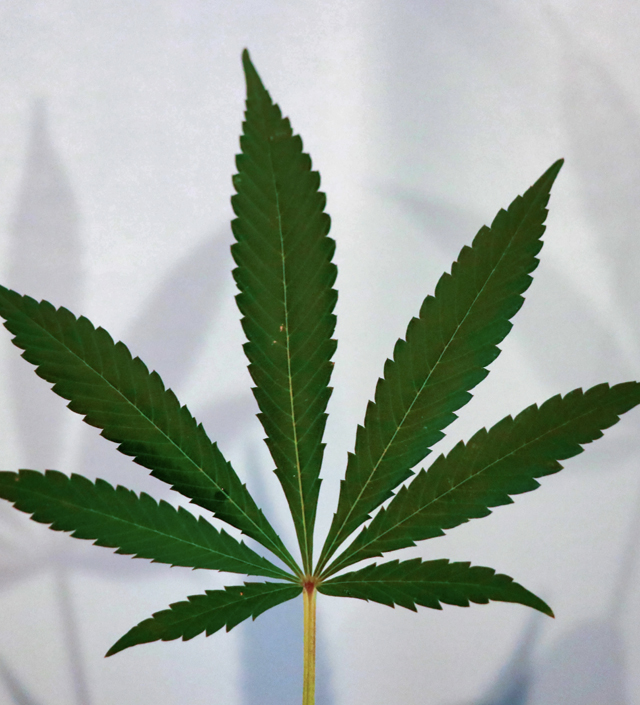When older adults seek guidance about using cannabis for medical purposes, they will find lots of information online — much of it contradictory, confusing and just plain wrong. And it may be difficult to find a medical professional to offer useful advice.
“It’s the wild, wild west out there,” says Dr. Peter Grinspoon, a primary care physician and medical cannabis specialist in Boston. Those who want to use medical cannabis safely need to be their own sheriff.
“As cannabis continues to be legalized throughout the country, this should be a major priority to provide balanced, consistent, evidence-based information for patients.”
Marijuana use is criminal at the federal level, but a 2014 law prohibits the Justice Department from interfering with the implementation of state medical cannabis laws. Currently, medical cannabis is legal in 36 states, the District of Columbia and four U.S. territories.
The medicinal value of cannabis is increasingly recognized, but research into the drug’s properties was taboo for decades, so the scientific evidence of its benefits and risks is still limited.
“Therefore, many clinicians do not feel comfortable recommending cannabis to treat chronic conditions or do not know how to give medical advice related to its use,” says Dr. Benjamin Han, a geriatrician, addiction medicine physician and clinician-researcher at the University of California-San Diego.
Where to Turn for Advice on Medical Cannabis?
Some states have tools to find registered practitioners who are comfortable recommending medical cannabis, Han says. In some states, physicians certify patients to receive state-issued medical cannabis cards via brief online appointments. However, it’s unlikely they’ll be familiar with your medical history, diagnoses and prescriptions, so the doctor may not be a good source of information for your particular situation.
Some dispensaries have pharmacists on duty, but that’s not always the case and salespeople are not required to have medical training.
“Someone at the dispensary may say ‘My cousin took something like this for a migraine at a Grateful Dead concert, so why don’t you try it for your headache?” Grinspoon says. “They are not supposed to be giving medical advice.”
Cannabis Is Increasing in Popularity
Despite the challenge of finding reliable information, many older adults are turning to medical cannabis to relieve troublesome health symptoms. A survey of 568 patients age 65 and older at a geriatrics clinic in San Diego found that 15% had used cannabis within the past three years; the vast majority used it for medical purposes only. (Medical cannabis has been legal in California since 1996; recreational use became legal in 2016.)
Nearly three-quarters of those in the study who used medical cannabis were treating pain, such as arthritis, while a smaller percentage took it to help with sleep and anxiety, says co-author Christopher N. Kaufmann, assistant professor in the Division of Epidemiology and Data Science at University of Florida.
Grinspoon, on staff at Massachusetts General Hospital, recommends cannabis for a wide range of conditions that cause those symptoms.
“That covers a lot of other things, including PTSD (post-traumatic stress disorder), colitis, abdominal pains, fibromyalgia and many others,” he says. “A lot of it comes down to the fact that, as people get older and often a little portlier, they get achy backs and joints and they need something for chronic pain and for sleep.”
In the geriatrics-clinic survey, more than 75% of patients who used cannabis reported that it was somewhat or extremely helpful in managing any of these conditions,” according to the study published in the Journal of the American Geriatrics Society.
Meanwhile, the perceived risk of regular cannabis use is decreasing among older people, but more clinical research is needed.
“As cannabis continues to be legalized throughout the country, this should be a major priority to provide balanced, consistent, evidence-based information for patients,” Han says.
Han and Grinspoon offer this advice for those wanting to try cannabis for medical reasons.
Talk to Your Doctor
The people responding to the California survey were patients at a geriatrics clinic, so they obviously have a relationship with a physician. Yet fewer than half of those using cannabis reported discussing it with their regular health care providers. That can be dangerous.
“It is important to inform your clinician about your interest in, or use of, cannabis so that, even if they are not knowledgeable about cannabis use, they can carefully monitor your chronic diseases and prescription medications to ensure cannabis is not exacerbating existing chronic disease or interacting with medications,” Han says.
“It’s a safer alternative for a lot of people, but it’s not for everybody.”
Go Slow To Find the Right Dose
Figuring out the cannabis dose that will treat your symptoms without unwanted side effects will take time.
“If you start with a very low dose and work your way up very slowly, it’s hard to get into trouble,” Grinspoon says. “But do it when you don’t have to drive, when you don’t have any child care responsibilities and you don’t have to work.”
Cannabis may affect you differently depending on how you use it. Smoking marijuana or putting drops of tincture under your tongue will affect you more quickly than eating a cannabis gummy.
“Edible cannabis products can take a while to have an effect in the body, so it is important to be patient when using it in this way,” Han says. “I’ve seen patients not experience an effect after ten or fifteen minutes and will take a large quantity, but then have issues a couple of hours later.”
Grinspoon recommends that new users start with a single drop of cannabis tincture, increasing the dose by one drop every day. “You’re just going to slowly get yourself up to a dose that gives you symptom relief,” he says.
Safety First
In many cases, Grinspoon considers cannabis to have less dangerous side effects than common pain treatments such as opiates or nonsteroidal anti-inflammatory drugs like aspirin and ibuprofen. Likewise, he often prefers to recommend cannabis rather than the sedatives commonly prescribed as sleep aids.
But all drugs have potential dangers. Among other things, cannabis can worsen psychotic disorders, cause cardiac and breathing problems and temporarily worsen short-term memory. There is a potential for overdosing — not a fatal overdose, but a bad experience — and some risk of addiction, although less than for alcohol or opiates, Grinspoon says.
“It’s a safer alternative for a lot of people, but it’s not for everybody,” he says. “It’s important to have an accurate understanding of the harms. Before I offer to recommend medical cannabis to someone, I ask ‘Is this less harmful than whatever else we would be using?’ And I think that’s the most important question.”
©Next Avenue.Lola Butcher covers policy and business issues for publications read by physicians and health care executives.







